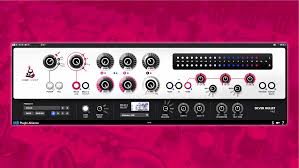Unijoin: What Is It, How Does It Work, and Why Is It Important in Model Railroading?

Introduction: Why Do Hobbyists Care About Unijoin?
When building a model railroad, especially using modular track systems, the details matter. Small accessories like connectors, feeders, and joiners can make or break the performance of your setup. Among these, the Unijoin system has become a widely recognized and trusted solution for hobbyists who use Kato Unitrack.
But what exactly is Unijoin? Why do experienced modelers insist on having them, and how do different versions—such as terminal Unijoins and insulated Unijoins—affect layout design? In this article, we will explore everything there is to know about Unijoin, from its purpose and types to practical applications and real-world benefits.
What Is Unijoin?
Unijoin is a specialized connector system designed primarily for Kato’s Unitrack model railway track. It combines mechanical stability with electrical conductivity, ensuring that both the track and power system function smoothly.
In simpler terms, Unijoin acts like a track clip with a built-in electrical function. It not only locks sections of track together but also provides either:
- A direct power connection (terminal Unijoin), or
- Electrical isolation between track blocks (insulated Unijoin).
This dual purpose makes Unijoin a critical accessory for anyone building advanced model railroad layouts.
How Does Unijoin Work?
The magic of Unijoin lies in its design. Unlike traditional rail joiners, which simply slide onto the rail ends, Unijoin integrates small wiring or insulating components into the joiner itself.
- Terminal Unijoin: Features attached wires that connect to a power pack or controller, delivering electricity directly into the track.
- Insulated Unijoin: Made from non-conductive material, preventing electrical flow between two joined track sections.
Both types fit seamlessly into Unitrack without requiring cutting, soldering, or complicated wiring. This makes them extremely user-friendly for beginners while still being powerful tools for advanced hobbyists.
Why Is Unijoin Important?
Reliable Power Distribution
One of the biggest challenges in model railroading is ensuring that power flows evenly throughout the layout. Dead spots can cause trains to stall or run unevenly. By using terminal Unijoins, hobbyists can inject power into multiple points, eliminating weak spots.
Block Control and DCC Systems
With insulated Unijoins, modelers can divide their track into separate “blocks.” Each block can then be controlled independently—perfect for Digital Command Control (DCC) operations, reverse loops, or multi-train setups.
Easy Installation
Unlike soldering feeder wires, which can be intimidating and time-consuming, Unijoin is a plug-and-play solution. This makes it ideal for hobbyists who want reliability without technical hassle.
Types of Unijoin Available
1. Terminal Unijoin (Kato 24-818)
- Provides direct power to the rails.
- Comes with pre-attached leads (often around 35 cm long).
- Can be plugged directly into a power pack or connected via adapter cords.
- Especially useful on curves, turnouts, or crossovers, where a standard feeder track doesn’t fit.
2. Insulated Unijoin (Kato 24-816)
- Made from clear or plastic material.
- Electrically isolates two adjoining track pieces.
- Essential for block wiring, reverse loops, and detection systems.
- Comes in multipacks, usually 20 pieces per set.
3. Standard Replacement Unijoin
- Basic rail joiners that maintain both mechanical and electrical connections.
- Useful for replacing worn-out joiners in older track sections.
Practical Uses of Unijoin in Layouts
Adding Power in Complex Layouts
Imagine building a large oval with multiple sidings. If you only power the track from one point, the far side may receive weak current. By installing terminal Unijoins at strategic spots, you can maintain consistent voltage everywhere.
Creating Reverse Loops
Reverse loops are notorious for causing short circuits because of polarity issues. Using insulated Unijoins at loop entry points allows you to isolate the section and add polarity-switching modules.
Dividing Layouts Into Blocks
For operators who enjoy controlling multiple trains at once, insulated Unijoins enable block-based operations. Each section can have its own power feed, making multi-train management much smoother.
Advantages of Using Unijoin
- Simplicity: No soldering required.
- Flexibility: Works with straight track, curves, and turnouts.
- Reliability: Provides a solid electrical connection without loose wires.
- Compatibility: Designed specifically for Kato Unitrack in both HO and N scales.
- Cost-Effective: A small investment that saves time, prevents wiring errors, and improves layout performance.
Limitations of Unijoin
While Unijoin is a fantastic solution, it’s not perfect.
- Limited to Kato Unitrack: Cannot be used with other brands without modification.
- Wire Length: Pre-attached leads may be too short for some layouts, requiring extension cords.
- Price vs. DIY: Hobbyists who prefer soldering feeders may find Unijoins slightly more expensive in the long run.
User Experiences and Community Feedback
- Many hobbyists praise terminal Unijoins for solving “dead spots” on layouts, especially around turnouts and crossovers.
- Insulated Unijoins are widely appreciated by DCC users who need clean block separation without cutting rails.
- Beginners find Unijoin invaluable because it eliminates the intimidation factor of soldering, making layout wiring more approachable.
Frequently Asked Questions About Unijoin
What is the difference between a feeder track and a terminal Unijoin?
A feeder track is a short section of track with built-in wires, while a terminal Unijoin is a small joiner that replaces the rail joiner on any piece of track, allowing more flexibility in placement.
Can I use Unijoin in both N scale and HO scale?
Yes. Kato produces Unijoins for both scales, making them versatile for different layouts.
Do I still need insulated Unijoins if I run only one train?
Not necessarily. If you don’t plan to divide your layout into blocks, standard joiners or terminal Unijoins may be sufficient.
How many terminal Unijoins should I use in my layout?
This depends on the size of your layout. For small ovals, one or two may be enough. For larger, more complex layouts, multiple feeds are recommended to ensure even power distribution.
Step-by-Step Guide: How to Install a Terminal Unijoin
- Identify the track section where you want to add power.
- Remove the existing rail joiner from that section.
- Insert the terminal Unijoin in its place, ensuring it locks securely.
- Connect the attached wires to your power pack or controller.
- Test the section by running a train to confirm even power delivery.
Conclusion: Why Every Modeler Should Know About Unijoin
The Unijoin system is one of the most useful accessories for model railroaders using Kato Unitrack. By simplifying wiring and offering both power feeds and electrical isolation, it bridges the gap between beginner-friendly ease and advanced operational needs.
Whether you’re building a small starter oval or a sprawling DCC-controlled empire, Unijoin helps you maintain reliable performance, clean wiring, and operational flexibility. For anyone who wants to avoid the hassle of soldering while still enjoying professional-level results, Unijoin is truly a game-changer in the model railway hobby. blogvista.co.uk



